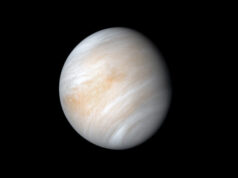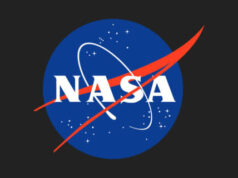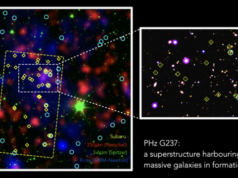Metals in space crops.Credit: Image courtesy of Wageningen University and Research Centre
Scientists of Wageningen University & Research centre are working on growing crops on Mars and moon soil simulants. Just like the real Martian and moon soil these contain heavy metals in almost the same quantities. Four of the crops grown were tested for heavy metal content. No concentrations were detected that would be dangerous for human health. The four crops are therefore safe to eat and, for some heavy metals, the concentrations were even lower than in the crops grown in potting soil.
Earlier research of the Wageningen scientists had already demonstrated that crops are able to grow quite well on Mars and moon soil simulant if organic matter is added to the soils. Heavy metals such as lead, cadmium and copper are known to be present in the soils. If they are taken up in the parts of the crops that may be eaten, they can make the vegetables inedible for humans. “For radish, pea, rye and tomato we did a preliminary analysis and the results are very promising,” says ecologist Wieger Wamelink. “We can eat them and I am very curious as to how the tomatoes will taste. Unfortunately, we have not been able to test all ten crops yet, which is why we set up a crowdfunding campaign through which people can feel a genuine participation in this research. Donors will receive a variety of potential gifts of which my personal favourite is a dinner based on the harvest that will include potatoes grown on Mars soil simulant.”
Heavy metals
The radishes had the highest amount of metals overall, with a relatively high amount of aluminium, iron and nickel. It is still unknown if the contamination only comes from the outside of the plant or also from the inside. If the radishes were properly washed the content would probably have been lower. It was very peculiar that the crops grown on earth potting soil had higher contents of lead, arsenic and copper than the Martian soil simulant in particular. It is still unknown if the take up of heavy metals is the same on Earth as it would be under the lower gravity conditions found on Mars and the moon. It is likely that only research ‘on site’ will solve this question.
Crowdfunding
Find your dream job in the space industry. Check our Space Job Board »
Only four of the ten crops have so far been tested. In the present experiment the researchers will test all crops on heavy metals — providing we get the funding. They will not only look at the heavy metals, but also at vitamins, flavonoids (they play a big role in determining the taste) and alkaloids, that may be poisonous. The first crops, green beans, radishes, rocket and spinach have already been harvested and the rest, including potatoes, will soon follow. They will investigate if the heavy metal content is below the critical levels set by the Dutch Food agency and the US Food and Drug Administration (FDA). If the researchers are certain it is safe to eat the potatoes, peas, carrots, garden cress, green beans, radish, rye and tomatoes, they will organize a meal for the sponsors of their research. The sponsors will be the first to eat the ‘Martian’ tomatoes and taste if they have a different flavour from the normal earth tomatoes.
Video of presentation Dr Wieger Wamelink: https://youtu.be/LHGkjFnt0nY
Overview of the Mars Moon experiment: http://www.youtube.com/watch?v=TgKsYtVuR80











